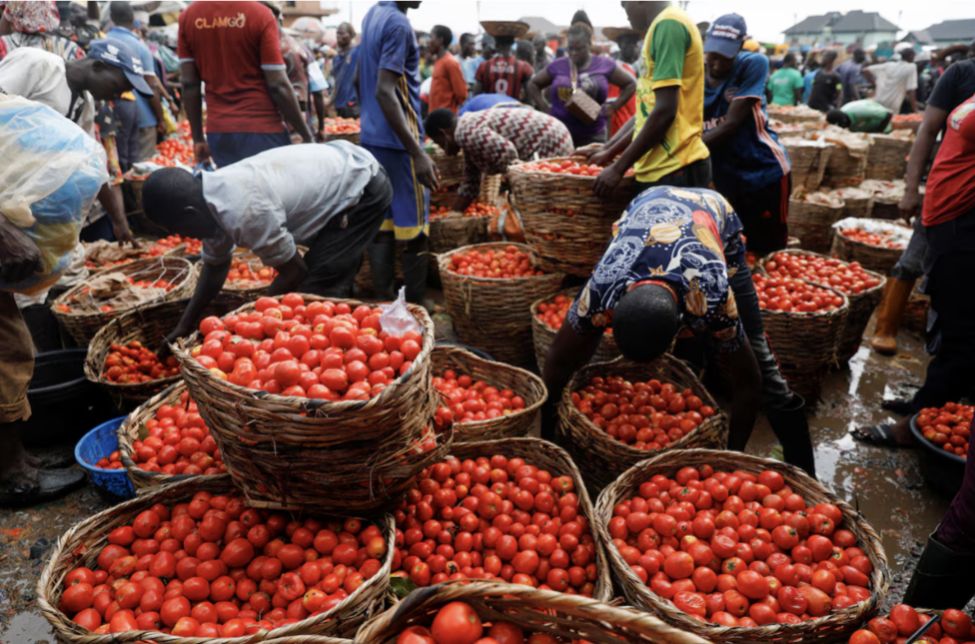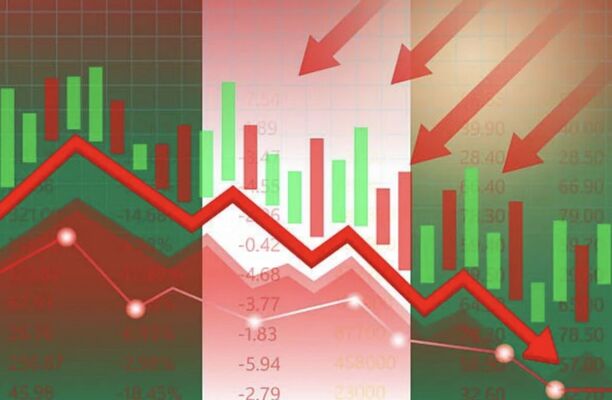By Sunkanmi Adewunmi
Edited by Ezennia Uche
Nigeria’s consumer inflation has been steadily cooling in 2025, easing for five consecutive months as of August. The National Bureau of Statistics (NBS) reported that the headline inflation rate fell to 20.12% in August, down from 21.88% in July. This 1.76 percentage-point drop marks the fifth consecutive month of decline from the 24+% rates seen earlier in the year. For example, inflation was 24.48% in January, 23.18% in February, and 24.23% in March(after a rebasing of the CPI index), before easing to 20.12% in August.
The downturn is broad-based. Food inflation, the largest component of the CPI, also eased sharply. Food prices rose 21.87%in August, down from 22.74% in July, and far below the 37–39% peaks of a year earlier. Staples like rice, maize, millet, and sorghum saw price declines during the harvest season, contributing to slower food-price inflation. In urban areas, year-on-year inflation fell to about 19.8% in August, versus 34.6% a year before. The sustained decline from above 34% in late 2024 (after subsidy removals) to around 20% reflects both base effects and genuine cooling of price pressures.
Why it’s Stabilizing
Several factors have helped tame Nigeria’s inflation. First, monetary policy has been tight: the Central Bank of Nigeria (CBN) kept its main rate at 27.50% through 2024 and 2025, helping anchor inflation expectations. Analysts note that high interest rates have attracted foreign portfolio inflows and stabilized the naira. A stable exchange rate makes imports (including food and fuel) cheaper, reducing cost-push pressures. Indeed, the naira has traded stronger in 2025 (around ₦1,520–₦1,540/$) compared to last year, easing some inflationary pressure.

Second, the food supply has improved. The end-of-2024 harvest season boosted the availability of staples, and some states enacted measures to speed up farm output. Food inflation slowed as a result: as Commercio Partners’ Ifeanyi Ubah explains, “food inflation declined both on a year-on-year and month-on-month basis, supported by increased commodity supply as we are in the harvest season. This easing in food inflation is a positive signal for the Monetary Policy Committee (MPC)”. The NBS confirms prices of key items like rice, corn, millet, and soya milk fell in August. Global commodity prices have also cooled from 2022–23 peaks: world oil prices eased from recent highs, which (after Nigeria removed domestic fuel subsidies) ultimately helped restrain domestic transport and energy costs.
Third, base-year effects are significant. Inflation in late 2024 hit 28-year highs (upwards of 40%) after subsidy cuts and a currency devaluation. When NBS rebased the CPI (changing the reference year from 2009 to 2024), headline inflation “fell” mechanically from 34.8% in Dec 2024 to 24.48% in Jan 2025. With that higher base now rolling off, annual inflation rates naturally decelerate. As Dr. Muda Yusuf of the Centre for the Promotion of Private Enterprise (CPPE) notes, base effects from unusually high 2024 inflation have been one factor helping “Nigeria gradually regain macroeconomic stability”.
Taken together, these factors have returned inflation to the 20–24% range. Economist Razia Khan of Standard Chartered points out that “the tightness of policy, stability of the naira, and lower food and fuel inflation” support the view that Nigeria can finally begin an easing cycle. Of course, challenges remain: core inflation (ex-food and energy) was still about 20.3% in August, and costs for housing, utilities, and transport are still rising. But the overall trend is clearly downward, good news after the run-up in prices of recent years.

Economic Impact and Outlook
The persistent disinflation has important implications. Most immediately, it has raised hopes for interest rate cuts. The CBN has held its Monetary Policy Rate at 27.50% for months, but analysts increasingly expect modest reductions late in 2025. BusinessDay reports that most economists surveyed anticipate the CBN maintaining or only slightly cutting the MPR at its September meeting, with a few forecasting a cut to 27.25–27.00%. United Capital and Afrinvest both argue that a small cut (25–75 basis points) is now feasible, signalling confidence in the disinflation trend. Even the CBN Governor, Olayemi Cardoso, has hinted that policy rates may eventually fall as macro conditions stabilize – noting at a Lagos forum that loan rates (currently 32–36%) could come down when inflation is tamed.
Lower interest rates could, in turn, boost growth and credit. A modest cut would ease the government’s debt servicing costs and encourage more lending to the private sector. However, authorities are cautious: Yemi Kale (Afreximbank) warns that inflation is still high and credibility is on the line. The CBN and fiscal managers will tread carefully to ensure the fall in inflation is sustained before easing policy significantly.
For households, easing inflation brings some relief, but the cost of living is still high. Many families remain squeezed, focusing on essentials and trading down on non-essentials. Business confidence is rising, yet consumer confidence is fragile due to weak purchasing power. Each drop in inflation helps, but Nigerians continue to stretch limited budgets, with Lagos ranked as the African city hardest hit by lost purchasing power in 2025.
Nonetheless, the slide in inflation is a positive sign for the economic outlook. A more stable price environment should eventually support higher real incomes and demand. It also improves prospects for investors: stable prices and rates would attract more foreign capital to Nigerian bonds and equities, further easing the exchange rate and macro pressures. For now, policymakers will focus on cementing these gains. Lagos Chamber (LCCI) economist Chinyere Almona notes that although “inflation easing to 20.12%” is welcome, it is “uncomfortably high” and demands continued reforms. The Chamber urges bolstering food supply chains, fixing the oil sector (to stabilize energy costs), and deepening fiscal/monetary coordination.
The downward trend in Nigeria’s inflation (blue line) through 2025 reflects slowing price growth, even as costs of living remain elevated for many. Analysts note broad drivers: base effects from last year, tighter CBN policy, improved currency stability, and better food supplies (harvests) all helped ease inflation.








